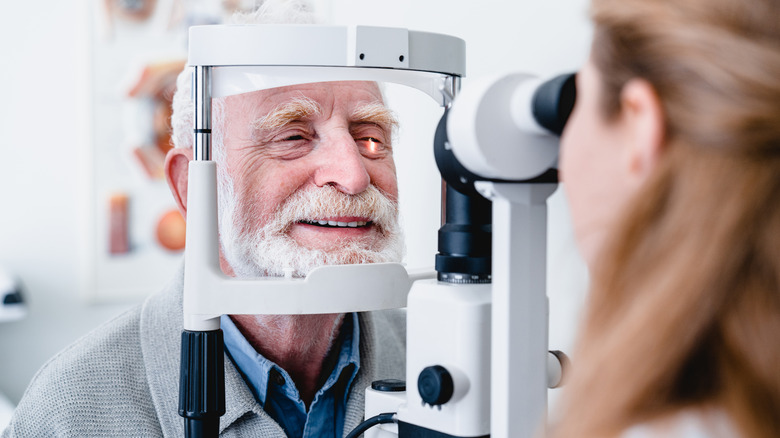How To Protect Your Eyes Against Diabetic Retinopathy
Diabetic retinopathy is a condition that occurs when high blood sugar levels from people with diabetes cause damage to blood vessels in the retina (via Mayo Clinic). The retina is the membrane that covers the back of the eye and sends signals to the brain when it detects light. If sugar blocks the blood vessels that go into the retina, it can cause them to swell and leak. New blood vessels may also grow. These changes affect your vision and when left unchecked can lead to blindness.
Fortunately, there are a number of things you can do to protect your eyes from this condition. Keeping your blood sugar and blood pressure at healthy levels will help you reduce the risk of complications from diabetes-related eye diseases (via Johns Hopkins Medicine). Avoid smoking, which puts you at risk for a long list of health conditions, including eye diseases. And finally, be sure to visit your eye doctor at least once per year, especially if you have diabetes. Early detection of diseases can help you avoid complications later on.
Types of diabetic retinopathy and treatment options
There are two different types of diabetic retinopathy: nonproliferative diabetic retinopathy (NPDR) and proliferative diabetic retinopathy (PDR). NPDR covers the first three stages of diabetic retinopathy when blood vessels in the eye are damaged but no new blood vessels are being made. PDR is the fourth and most severe stage of the disease (via Cleveland Clinic). It is reached when new blood vessels begin to grow in the retina.
Diabetic retinopathy does not usually present symptoms until significant damage has been made to the eye. Your eye doctor will likely be able to notice issues with your eye health earlier than you will, so regular visits are key to managing this disease. When symptoms do occur, they may include blurred vision, difficulty seeing at night, and trouble distinguishing colors.
There are few treatment options for the early stages of this disease. Your eye doctor may want to hold regular exams to monitor your health (via Mayo Clinic). Managing your diabetes with a healthy diet and exercise may also help to slow the effects. In advanced stages of diabetic retinopathy, surgery may be required. Options include photocoagulation surgery, which uses a laser to stop leakage from the blood vessels. This may not improve your vision but can stop it from worsening. Vitrectomy is a procedure that removes scar tissue and cloudy fluid from the eye. Finally, injections can be made into the eye that stop the growth of new blood vessels.


